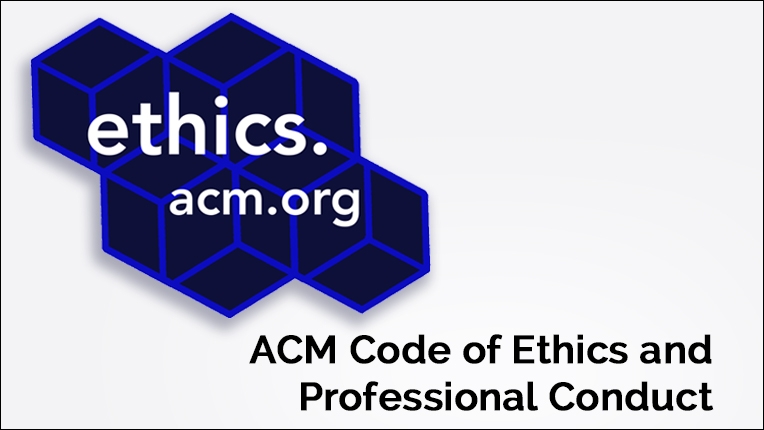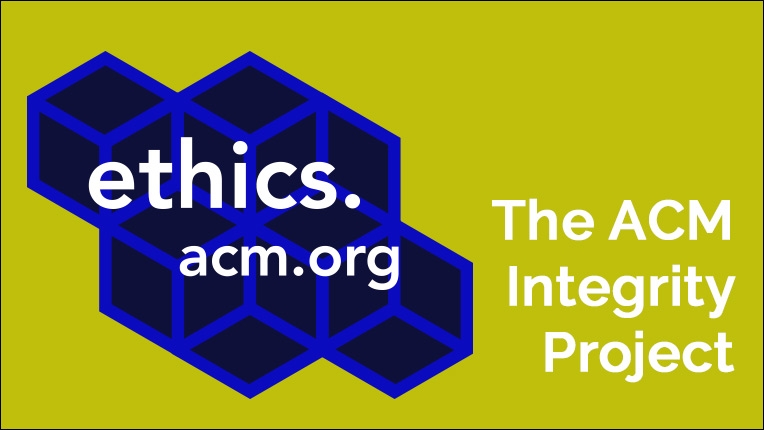Using the Code
Case Studies
The ACM Code of Ethics and Professional Practice (“the Code”) is meant to inform practice and education. It is useful as the conscience of the profession, but also for individual decision-making.
As prescribed by the Preamble of the Code, computing professionals should approach the dilemma with a holistic reading of the principles and evaluate the situation with thoughtful consideration to the circumstances. In all cases, the computing professional should defer to the public good as the paramount consideration. The analyses in the following cases highlight the intended interpretations of members of the 2018 Code task force, and should help guide computing professionals in how to apply the Code to various situations.
Case Study: Malware
Rogue Services touts its web hosting as “cheap, guaranteed uptime, no matter what.” While some of Rogue’s clients are independent web-based retailers, most are focused on malware and spam, which leverage Rogue for continuous delivery. Corrupted advertisements often link to code hosted on Rogue to exploit browser vulnerabilities to infect machines with ransomware. Rogue refuses to intervene with these services despite repeated requests.

Case Study: Medical Implants
Corazón is a medical technology startup that builds implantable heart health monitoring devices. After being approved by multiple countries’ medical device regulation agencies, Corazón quickly gained market share based on the ease of use of the app and the company’s vocal commitment to securing patients’ information. Corazón also worked with several charities to provide free or reduced access to patients living below the poverty line.

Case Study: Abusive Workplace Behavior
A new hire with the interactive technologies team, Diane became the target of team leader Max’s tirades when she committed a code update that introduced a timing glitch in a prototype shortly before a live demo. Diane approached the team’s manager, Jean, about Max’s abusive behavior. Jean agreed that the experience was unpleasant, but that was the price to pay for working in an intense, industry-leading team.

Case Study: Automated Active Response Weaponry
Q Industries is an international defense contractor specializing in autonomous vehicles. As an early pioneer in passive systems, such as bomb-defusing robots and crowd-monitoring drones, Q established itself as a vendor of choice for military and law enforcement applications. Q’s products have been deployed in a variety of settings, including conflict zones and nonviolent protests. Recently, however, Q has begun to experiment with automated active responses.

Case Study: Dark UX Patterns
The change request Stewart received was simple: replace the website’s rounded rectangle buttons with arrows, and adjust the color palette to one that mixes red and green text. But he found the prototype confusing. He suggested to his manager that this design would probably trick users into more expensive options they didn’t want. The response was that these were the changes requested by the client.

Case Study: Malicious Inputs to Content Filters
The U.S. Children’s Internet Protection Act (CIPA) mandates that public schools and libraries employ mechanisms to block inappropriate matter on the grounds that it is deemed harmful to minors. Blocker Plus is an automated Internet content filter designed to help these institutions comply with CIPA’s requirements. During a review session, the development team reviewed a number of complaints about content being blocked inappropriately.

Guiding Members with a Framework of Ethical Conduct
Learn more about ACM’s commitment to ethical standards: the ACM Code of Ethics, Software Engineering Code of Ethics and Professional Practice, and Committee on Professional Ethics (COPE), which is guiding these and other intiatives.

Ask an Ethicist
Ask an Ethicist invites ethics questions related to computing or technology. Have an interesting question, puzzle or conundrum? Submit yours via a form, and the ACM Committee on Professional Ethics (COPE) will answer a selection of them on the site.

Guidance in Addressing Real-World Ethical Challenges
The Integrity Project, created by ACM's Committee on Professional Ethics, is a series of resources designed to aid ethical decision making. It includes case studies demonstrating how the principles can be applied to specific ethical challenges, and an Ask an Ethicist advice column to help computing professionals navigate the sometimes challenging choices that can arise in the course of their work.

Supporting the Professionalism of ACM Members
The ACM Committee on Professional Ethics (COPE) is responsible for promoting ethical conduct among computing professionals by publicizing the Code of Ethics and by offering interpretations of the Code; planning and reviewing activities to educate membership in ethical decision making on issues of professional conduct; and reviewing and recommending updates to the Code of Ethics and its guidelines.
